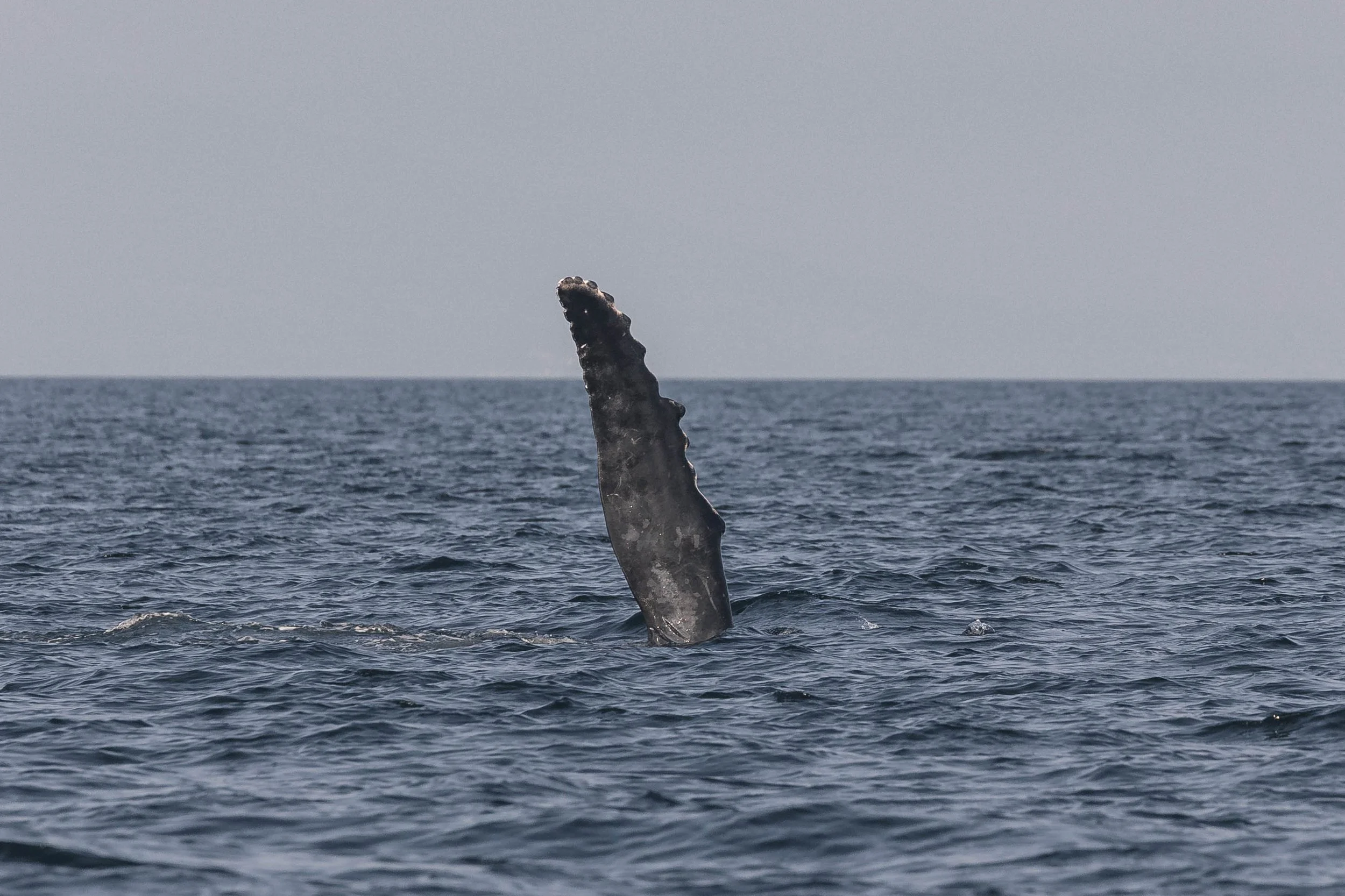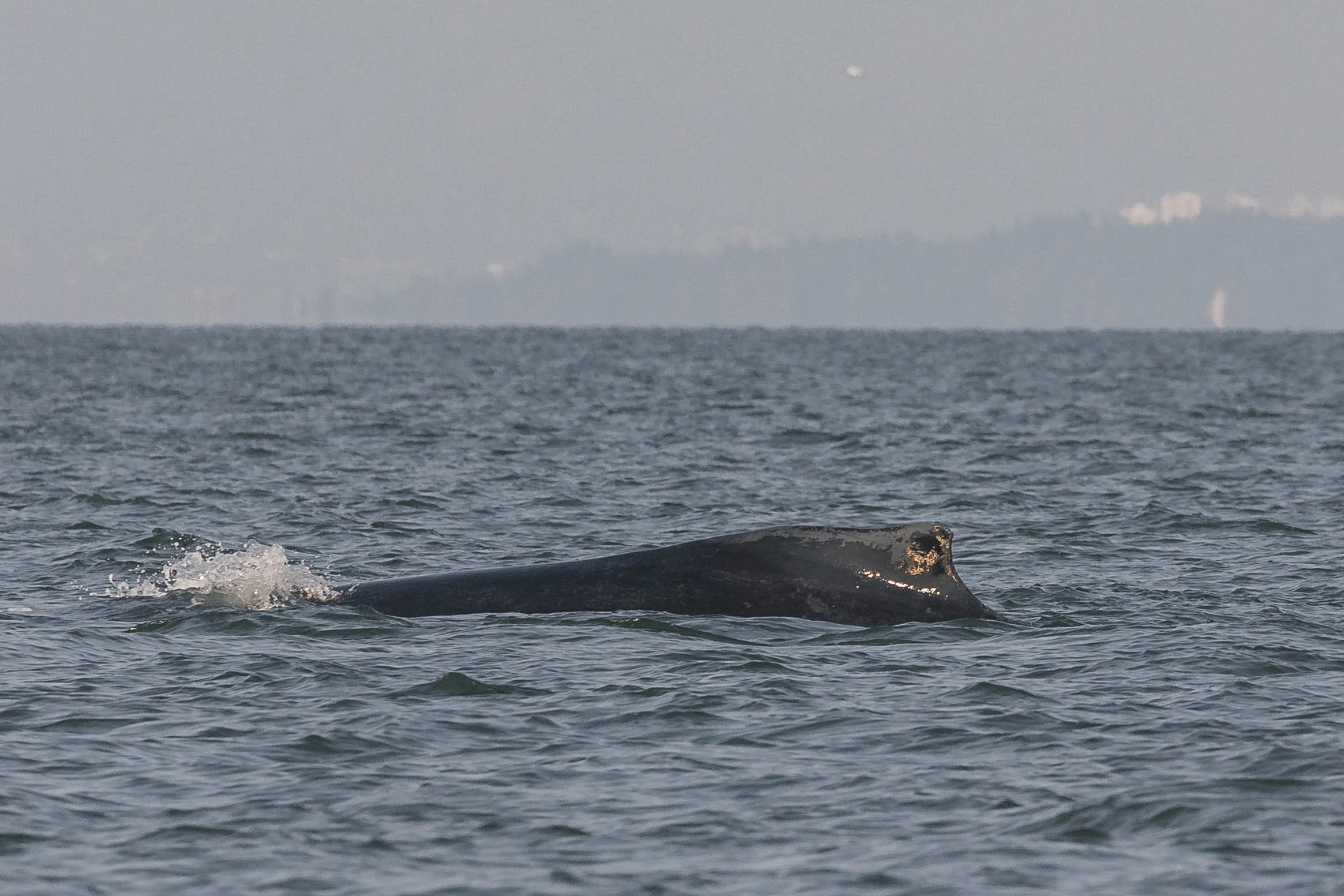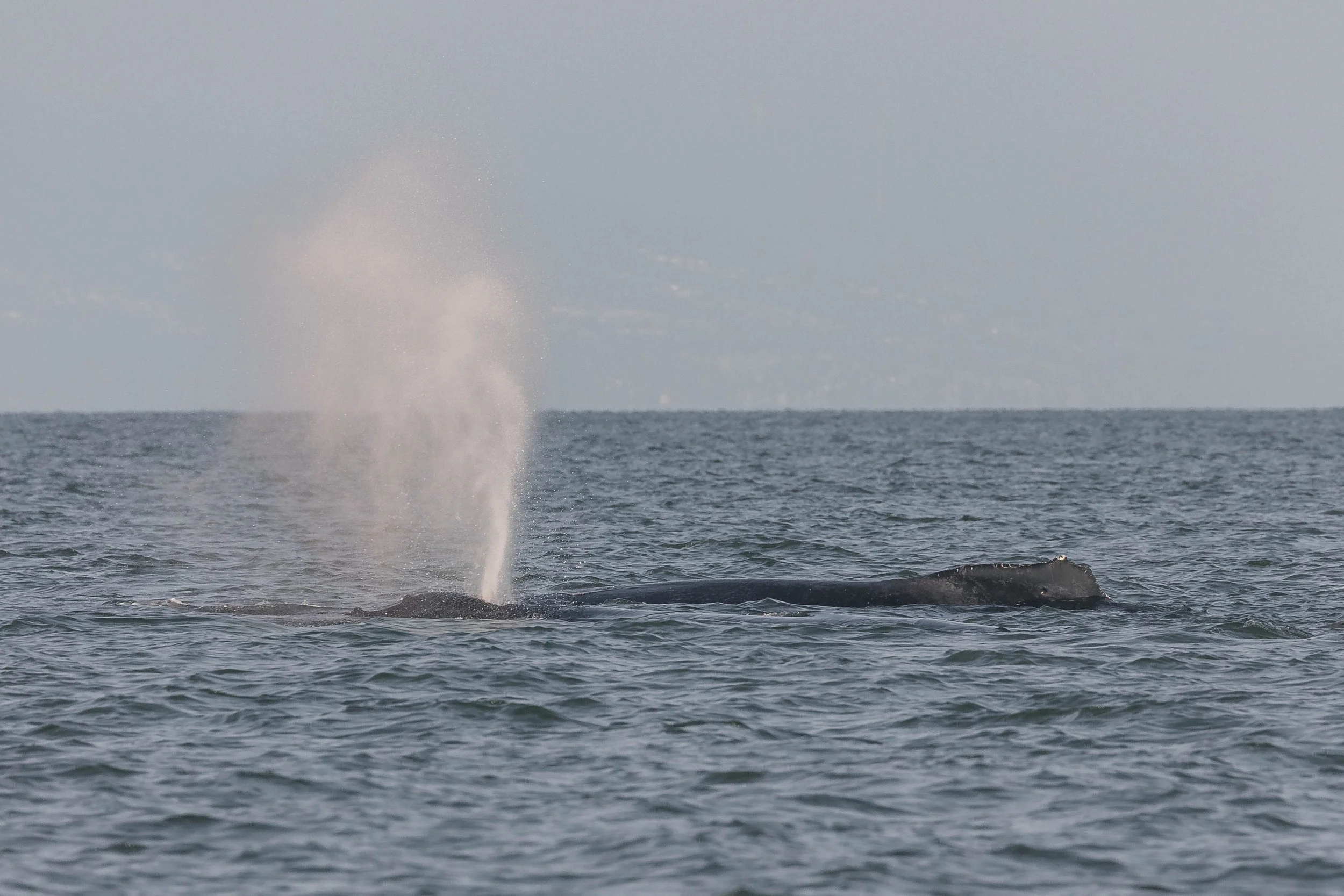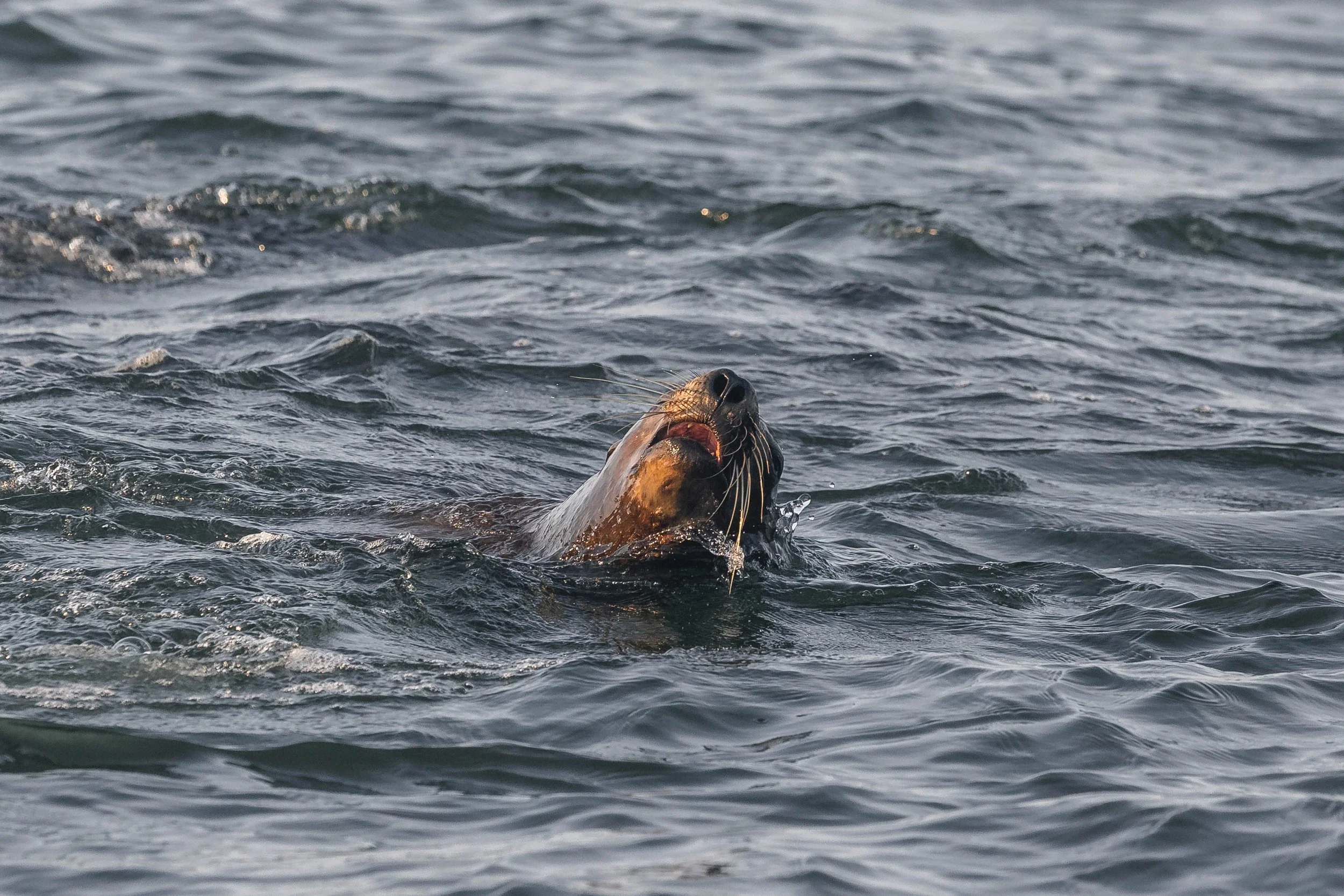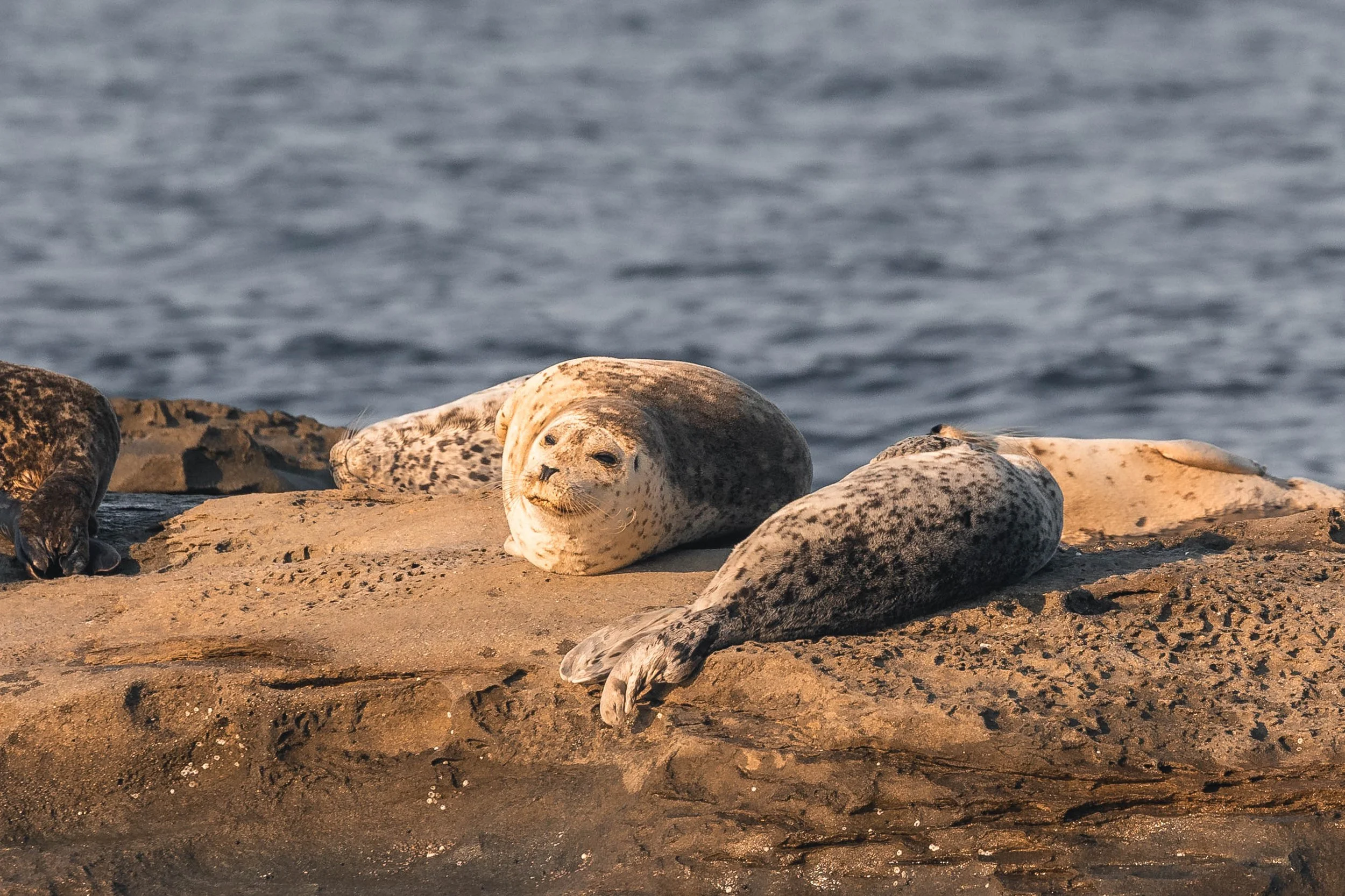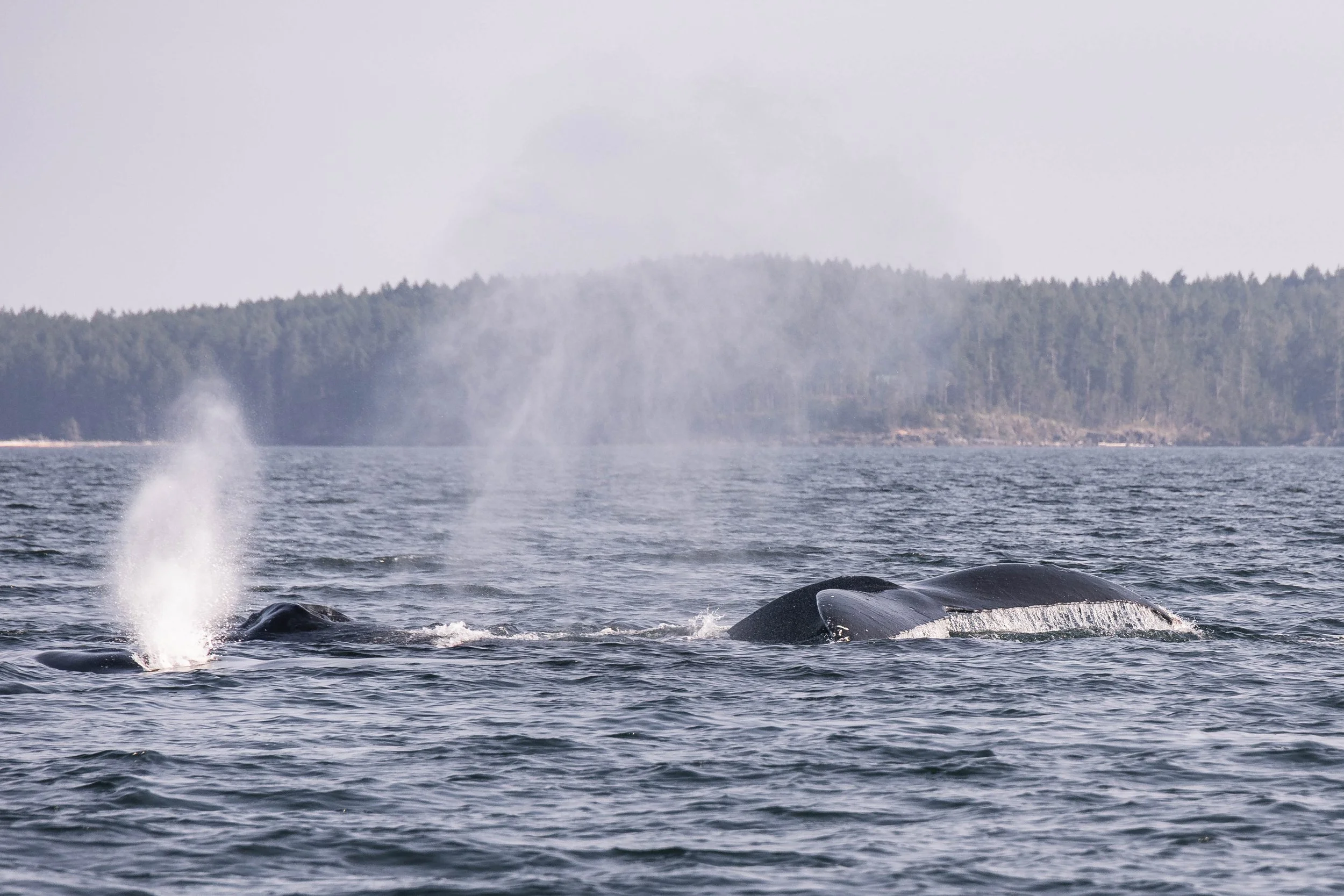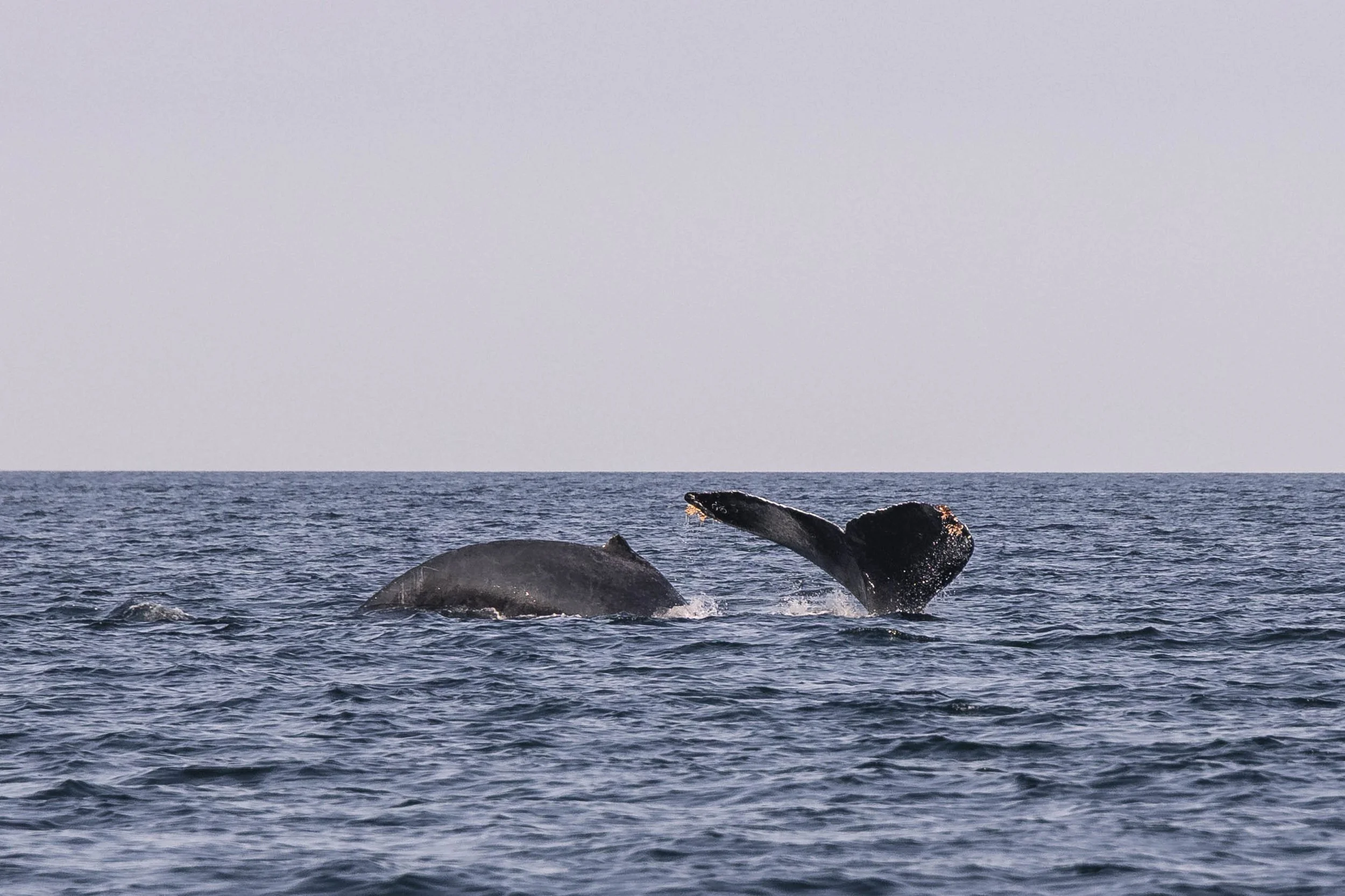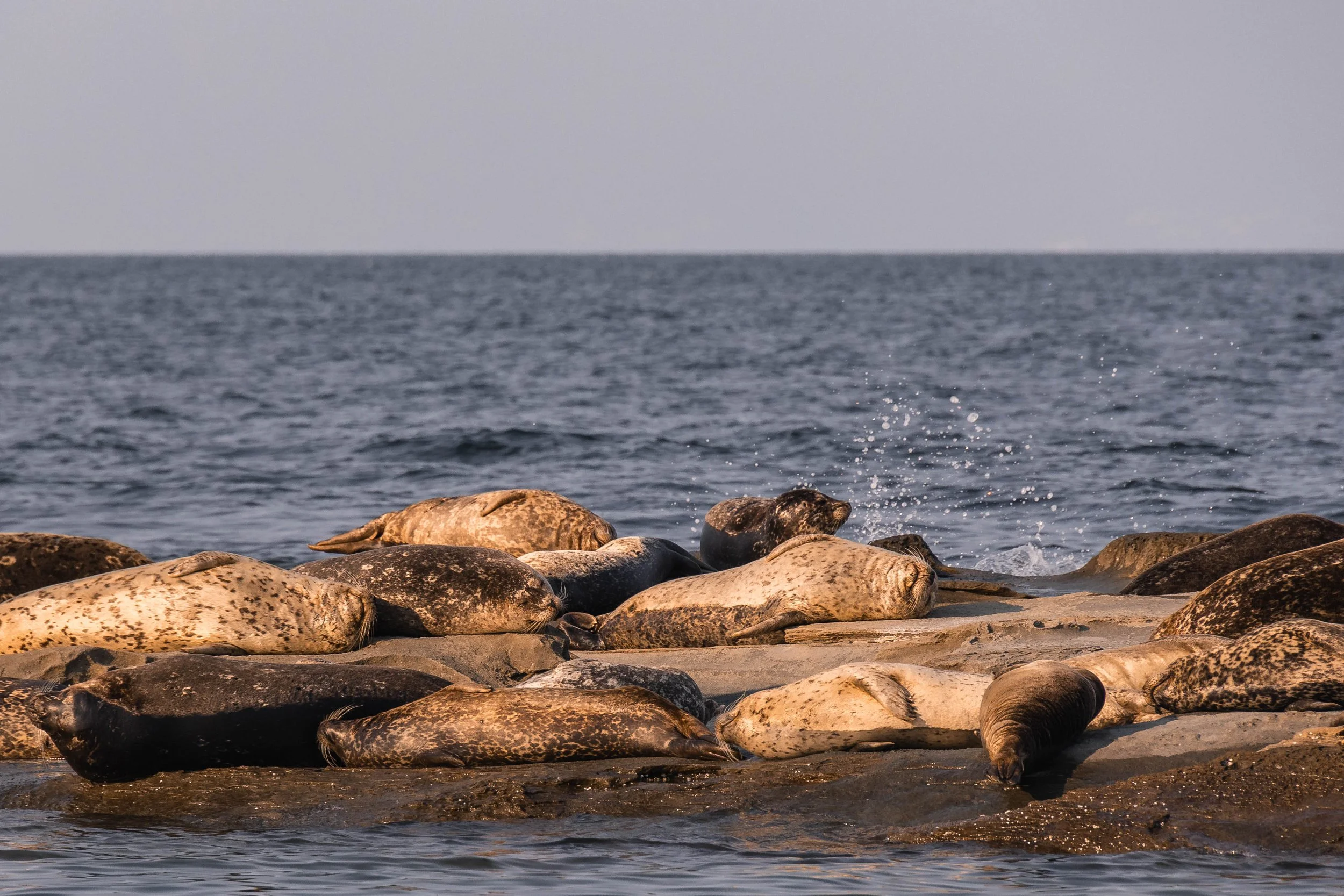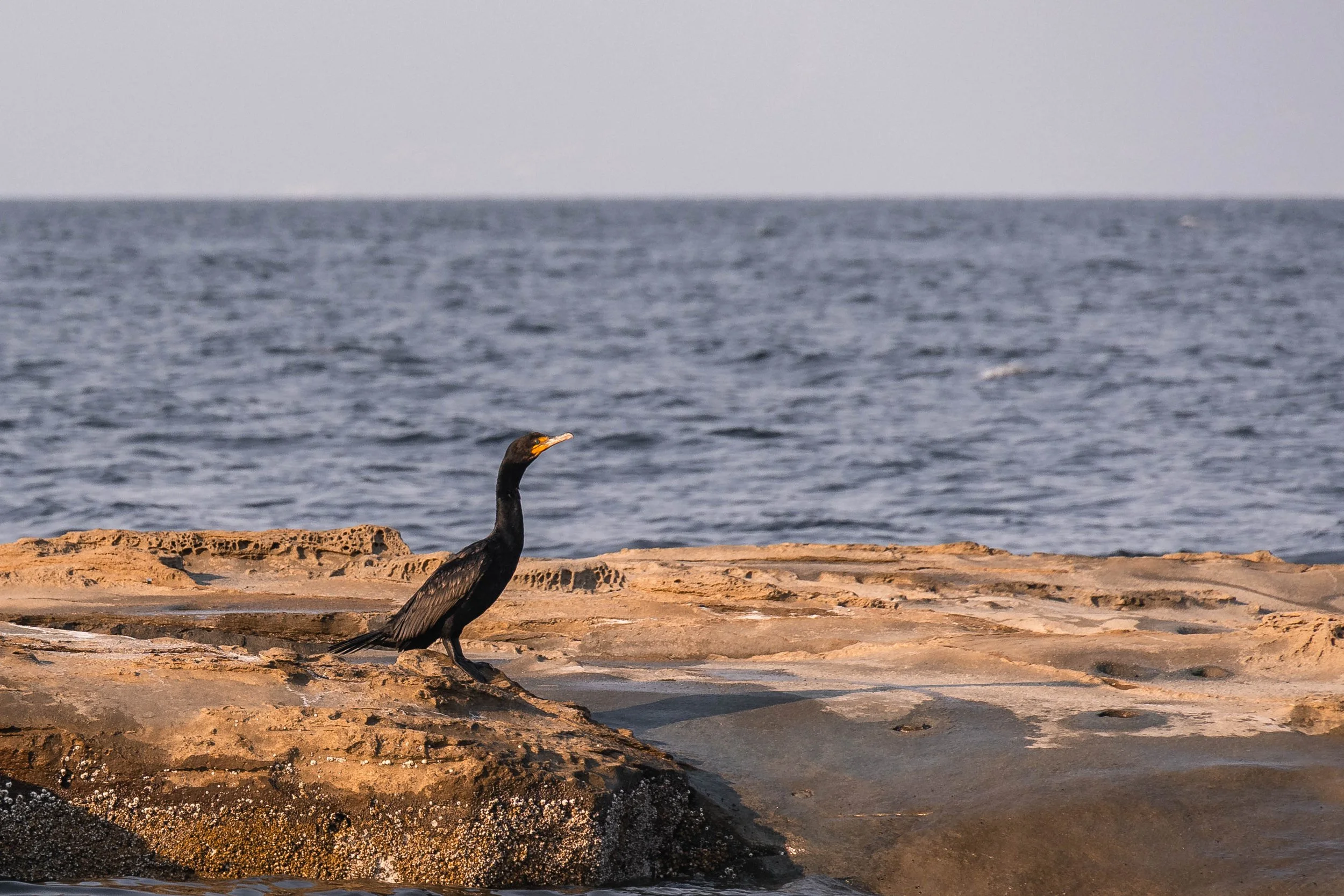August 3, 2025, 3:30 PM - All different sizes and ages of humpbacks in the Strait this afternoon!
Our two zodiacs were ready to head off this afternoon and hopefully continue our good luck from this morning! We split up to maximize our chances of success, with one boat heading south and the other north. Our good luck struck early, with one zode coming across Ghost (BCX1333) and her 2025 calf just north of Nanaimo! We stayed with these two for a few good surfaces, grabbed a few pictures and continued on our way. It wasn’t long before we saw another blow in the distance, but this time it was Niagara (BCY0057). Niagara is an easy boy to ID, with his signature waterfall marking on the fluke. Lucky for us, his top fluke is also easy to ID, because he has a recognizable spot in an area that is usually devoid of markings! That was good news for us, because this big boy went on a very long dive, not to be seen again. We left him to his feeding and continued zooming along.
Meanwhile, on the other open boat, we came across a trio of Humpbacks in our regular feeding ground off the coast of Gabriola. This trio consisted of Vanta (BCX1730), Seabird (BCX1774) and one Unknown, hanging out in close proximity together. Nearby, we saw more blows, a common sight this time of year. We’ve been calling this area near the Flat Top islands the “Nursery” because of all the mom/calf pairs we’ve seen here recently. This afternoon, a new mom brought her baby to this rich feeding area; it was Europa (BCX0854) and her 2025 calf. We have had a plentiful baby season so far this summer, with a whopping 12 Humpbacks that have brought back babies this year! These tiny new additions to the Salish Sea are incredibly playful, often bursting with energy after feeding from mom. Humpbacks nurse for 6-10 months from mom, packing on the pounds to prepare them for their long migrations in the spring and fall. Researchers have studied the relationship between moms and calves and recorded the varying vocalizations to try to get a glimpse into their complex communication. These tiny whales are great at asking for what they want, and researchers have concluded that they will beg mom for milk with a series of barks and snorts to get her attention. Looks like kids are kids, no matter what the species!
It’s not surprising to see multiple moms and calves in the same area, as this gives the calves a chance to socialize with other babies and adults, to help build valuable social skills. Groups of humpbacks containing multiple cows/calves have been studied off the coast of Australia, and appear to organize together in groups as the calves mature. These groups, called Multi-MC (multi-mother-calf) groups, are believed to provide many different skills to the calves, such as navigation of migration routes, improved communication and navigating predators. If these groups exist in the breeding grounds, chances are they start building those relationships, or continue them, here in the Salish Sea as well! Whatever the reason for the congregation, we love to see it. Guests were treated to some of this bouncing baby energy today from Europa’s little one, and we will miss them when they migrate in the fall.
After leaving our nursery, we found another pair not too far away, but this time it was Twinning (BCX1207) and Crater (BCX1565) hanging out together. In the morning, these two were feeding separately, so it was nice to see them meet up! Humpbacks don’t form long-term connections with other humpbacks outside of the mom/calf relationship, so this pair will likely go their separate ways soon. These two were spending time just off of Valdes Island, which was a short hop away from Stinky Rocks, our favourite place to see Harbour Seals and Sea Lions! We finished off the day with a stop at the Gabriola Bluffs, and it was great seeing all the baby cormorants and gulls still around.
Another successful trip in the Salish Sea!
Photos taken by Marine Naturalists Desarae Poier and Hayleigh Hilbert.
Ghost and her calf. Photo by Desarae Poier.
The front of Niagara’s top fluke. Photo by Desarae Poier.
Pec’s in the air! Photo by Desarae Poier.
Like you just don’t care! Photo by Desarae Poier.
A cartwheel from Europa’s calf. Photo by Desarae Poier.
Europa and her calf with pecs in the air. Photo by Desarae Poier.
Tails up! Photo by Desarae Poier.
Europa’s fluke. Photo by Desarae Poier.
Twinning’s dorsal fin. Photo by Desarae Poier.
Crater surfacing. Photo by Desarae Poier.
Twinning fluking. Photo by Desarae Poier.
Steller Sea Lion’s swimming past. Photo by Desarae Poier.
Steller Sea Lion popping up! Photo by Desarae Poier.
A harbour seal and her pup. Photo by Desarae Poier.
They blend in well to the shore! Photo by Desarae Poier.
A female harlequin duck. Photo by Desarae Poier.
Can you spot the spotty gull chick. Photo by Desarae Poier.
Vanta fluking. Photo by Hayleigh Hilbert.
Vanta surfacing with another pec slapping behind. Photo by Hayleigh Hilbert.
Can you spot all three whales in this photo? Photo by Hayleigh Hilbert.
Europa fluking with her calf in tow. Photo by Hayleigh Hilbert.
Europa on the left with her calf on the right. Photo by Hayleigh Hilbert.
A cuddle puddle of harbour seals. Photo by Hayleigh Hilbert.
A cormorant on the rocks. Photo by Hayleigh Hilbert.
An osprey in the trees. Photo by Hayleigh Hilbert.




